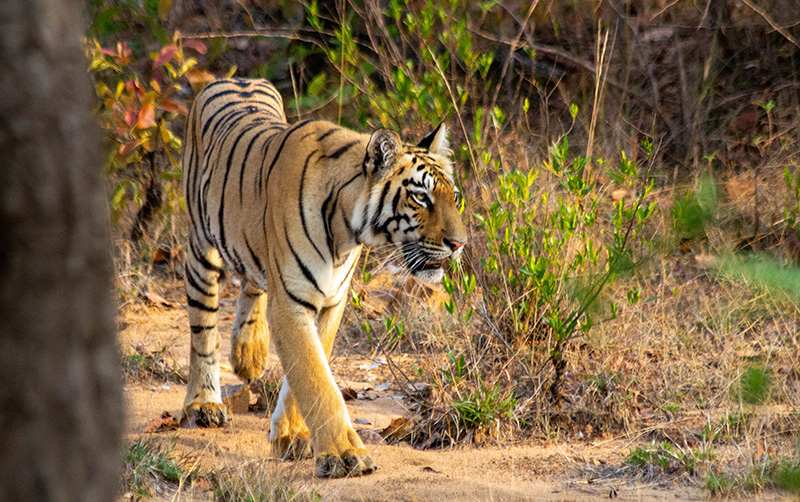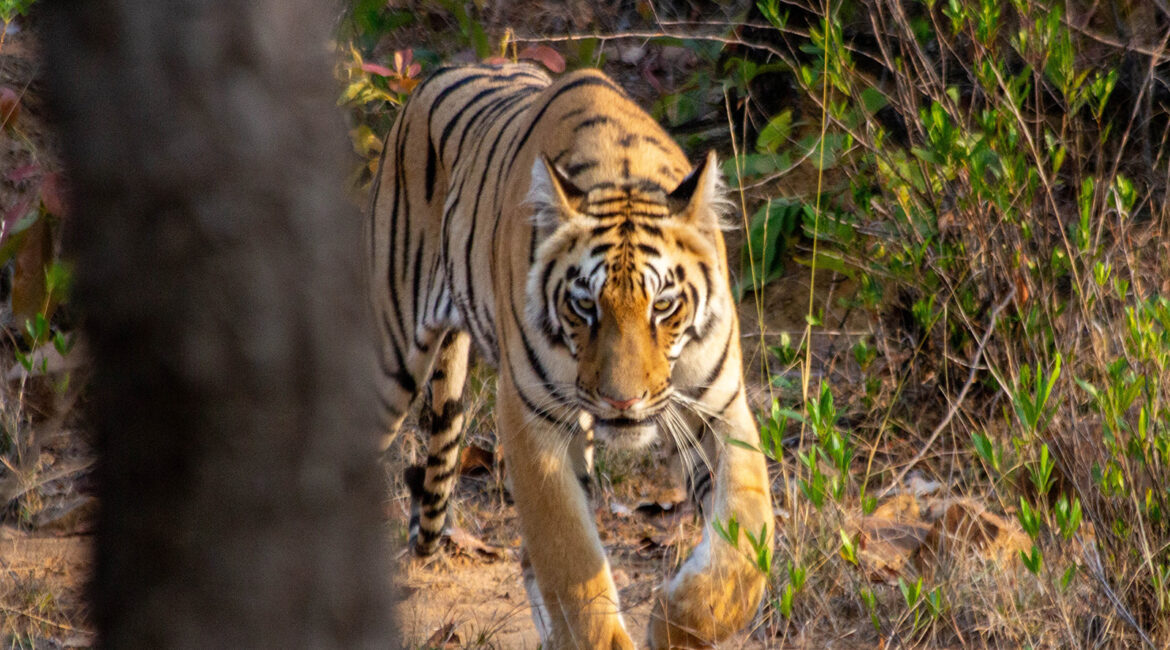25 tigers in 4 reserves equals 1 fabulous safari adventure in India. The reserves we visited were all located in Central India: Tadoba, Pench, Kanha and Bandhavgarh. I have been on many exciting African safaris however, the safaris in India are some of the craziest and most exciting that I have ever experienced.
I never thought of traveling to India. For some reason, that I now cannot recall, it wasn’t on my radar at all… Until I got a call from one of my travel industry travel buddies with an invitation to experience an Indian Tiger Safari. How could I possibly turn that down?
She and I had recently traveled to Tanzania, so she knew that I’m an African Safari specialist and addict, and this would be right up my alley. She was right. I’ve seen many of the iconic big cats – lion, cheetah, serval, genet, caracal and leopard – but I never dreamed of seeing a Bengal Tiger in the wild. I was not only eager to finally see one in person, but also to have the opportunity to see how a safari in India would compare to an African Safari.
There are many differences.

In Africa (more specifically in Southern Africa) there are limits to how many vehicles are allowed at an animal sighting at one time, usually 2 to 3 vehicles at the most. In the private concessions, you are allowed to go off-road which allows you to get much closer to the wildlife.
In India, there’s no limit to how many vehicles can be at a sighting. Imagine dozens of vehicles, all fighting to catch even the slightest glimpse of these magnificent creatures – drivers flying through the jungle on narrow, winding dirt roads. Vehicles are assigned different zones to spread the numbers in any area. Despite these limitations, jungle roads are still hectic. Because you can’t go off-road, tiger sightings can sometimes be way in the distance which can be torture if you are used to getting closer. But don’t worry, we had quite a few occasions when the tigers came right next to the vehicles so you do have a good chance of seeing one up close.
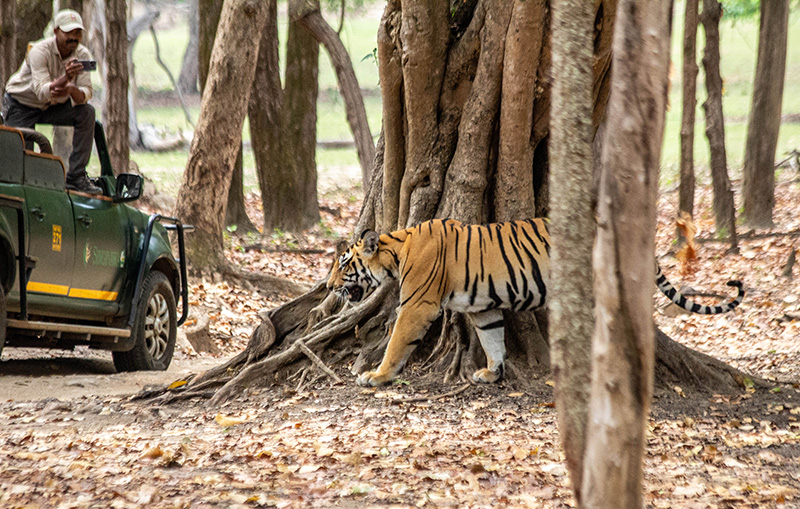
In Africa, game drives are conducted in the early morning, around sunrise, and in the evening when you will return after dark. Safari lodges are located inside the park which allows for this kind of activity. Some lodges will even offer a full-day drive. When guides learn of a sighting that’s far away, they will take you on a “Ferrari Safari” and get you to the animals as quickly as possible.
In India, the speeds are carefully monitored and, although there seem to be so many vehicles, there would be more if it weren’t for the strict rules implemented by the national parks. Such rules include how much time one can spend in the park – vehicles MUST be out by 11:30 AM otherwise there are steep fines, and the drivers are banned from the park for a week. Because the lodges are located outside of the parks, you will start your safari later in the morning and you must be out before dark.
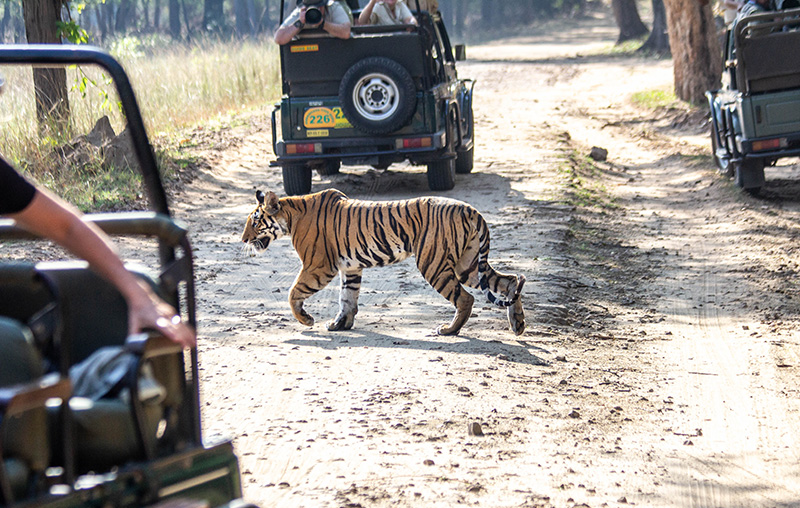
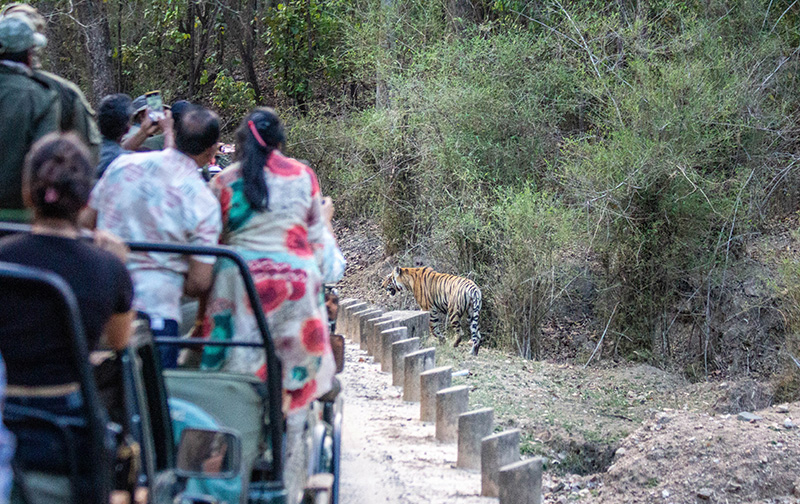
When comparing African wildlife to Indian wildlife, Africa generally boasts a wider variety of large mammals, including iconic animals like giraffes, zebras, and hippos, which are not found in India, while India is most recognized for its Bengal tigers, which are not native to Africa; essentially, Africa has a greater biodiversity overall, particularly in large herbivores, while India has a unique fauna with a strong focus on the tiger population. When going on an Indian Safari, you must be ok with just enjoying being in nature and don’t expect to see animals around every corner. Some of the favorite animals that we saw were the Langur Monkeys, Spotted Deer and wild Peacocks.
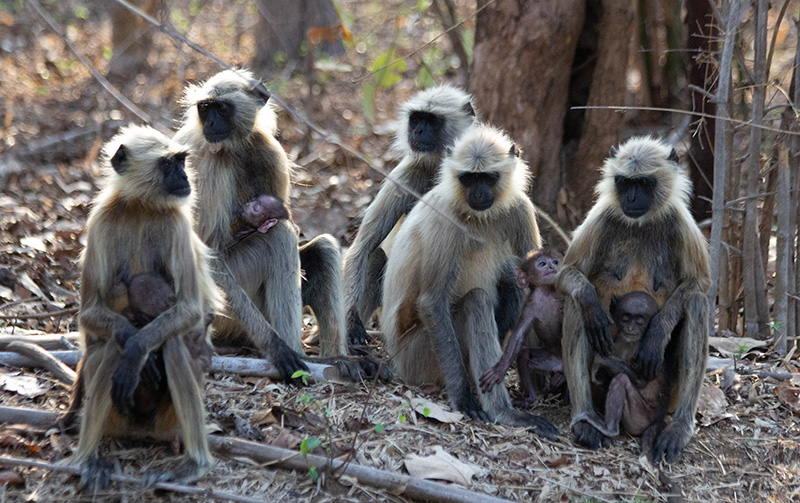
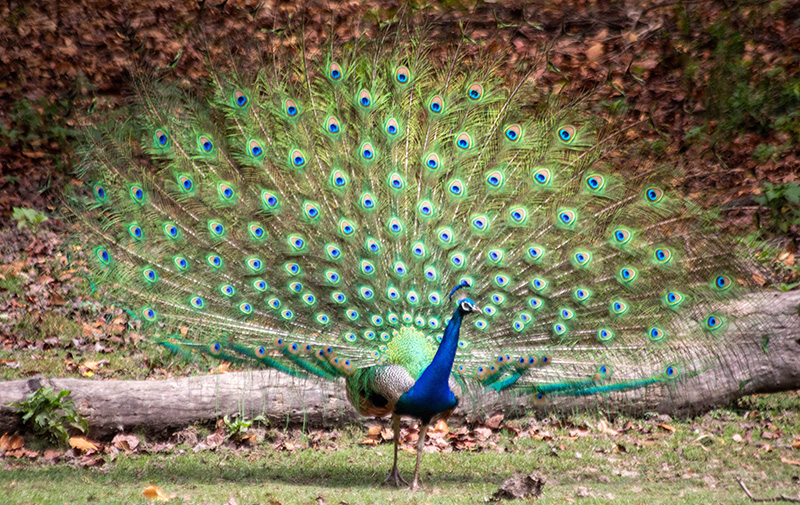
When comparing African anti-poaching efforts to Indian ones, African anti-poaching generally faces a larger scale and more intense poaching problem due to the continent’s vast wildlife populations, particularly large mammals like elephants and rhinos, while India’s poaching issues tend to be more concentrated on specific species like tigers and rhinos in smaller geographic areas. In Africa, the anti-poaching rangers patrol the parks on foot. In India, they utilize elephants as a means for getting around.
This leads to a story of one of my favorite moments on the tiger safari. We were in the Kanha National Park when we stopped on a bridge to observe the anti-poaching rangers bathing their elephants near a dam. The elephants looked so happy and content with their bath, allowing the ranger so scrub and rinse them. As we were watching this, a beautiful tiger appeared from under the bridge on which we were sitting and made his way up the hill on the opposite side. He posed perfectly for us as we couldn’t decide which direction to look. Both the tiger and elephant spa were so unusual, we just went back and forth with our cameras, photographing the tiger on one side and the spa on the other. I’ll never forget that moment.


I saw few Westerners safari-goers. Most were from India but, no matter where you come from, everyone is excited to see the tigers—the country’s national animal. Watching all the vehicles follow a tiger is like watching a press core trying to capture a shot of the jungle’s celebrity—Tiger Paparazzi. Watching the general excitement of seeing these amazing animals the bamboo thicket was quite a sight and privilege to experience.
